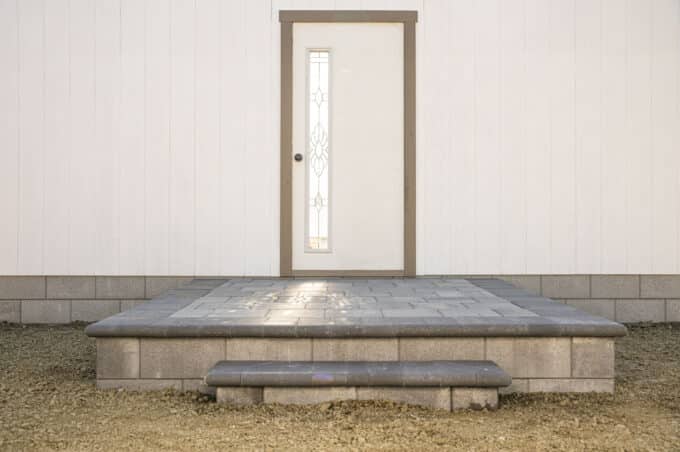
How to Build a Raised Paver Patio
Building a raised paver patio is an excellent option for homeowners who want to expand or raise their outdoor entertainment area and create a cozy, relaxing spot. In this blog […]

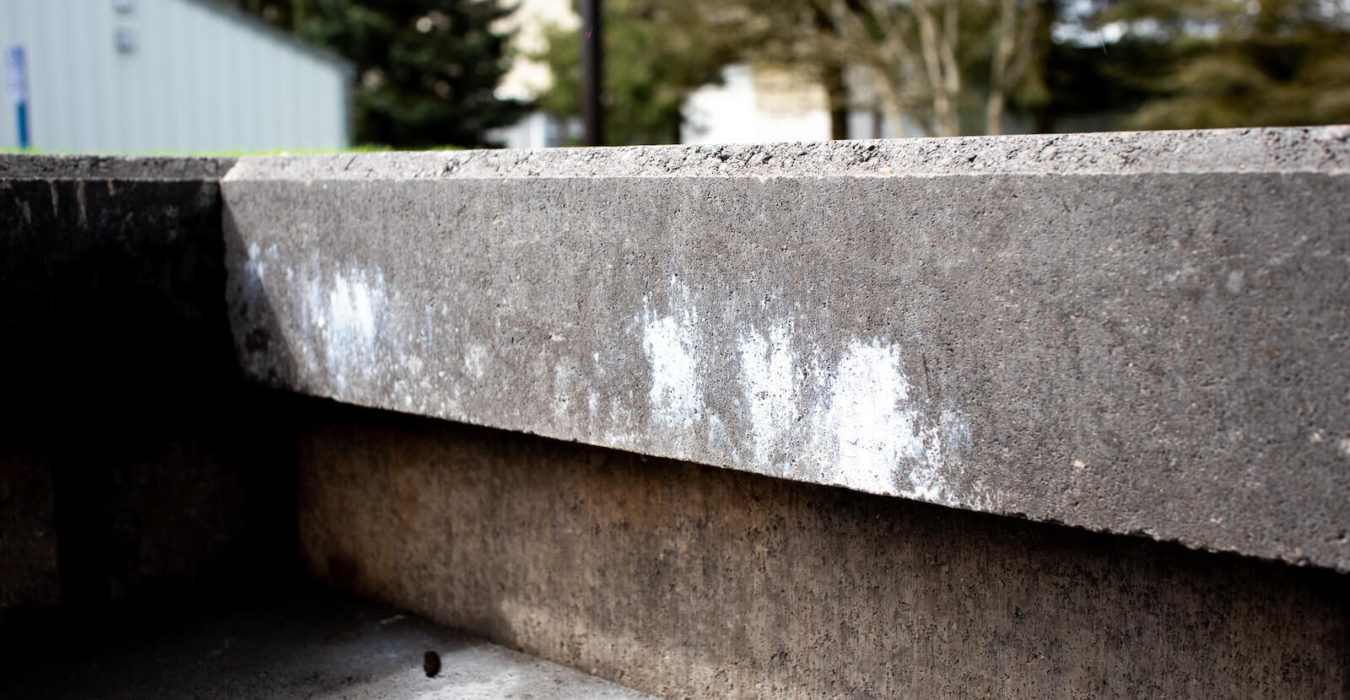

Likely, you’re looking at efflorescence. Let me explain. When you boil it down, paving stones are just small blocks of concrete. The thing is, concrete doesn’t dry quickly; it cures over time. During the curing process, calcium hydroxide (in the form of moisture) comes to the surface and combines with carbon dioxide in the air. Together, those two elements create calcium carbonate, which is also known as efflorescence.
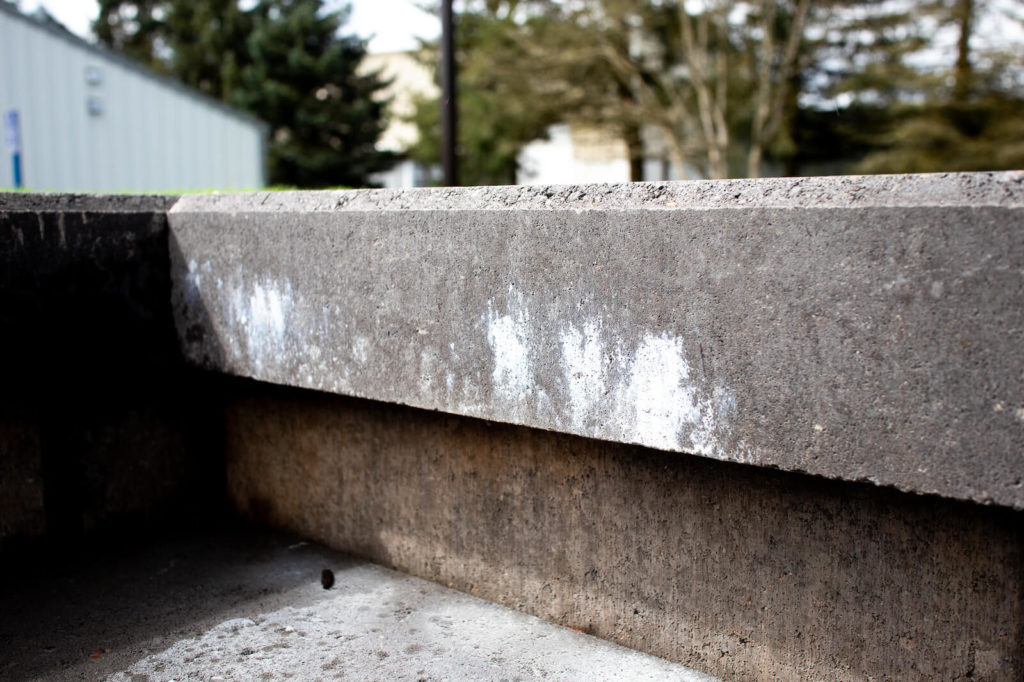
In short, your paving stones aren’t disintegrating; they’re curing. What you see on the surface of your hardscape is simply a soluble salt and base deposit that you can easily remove. Rest assured that while efflorescence can look scary, it’s generally harmless and won’t affect the structural performance of your concrete paving stones.
It’s quite simple to remove efflorescence. However, don’t be naive; you can do severe damage if you don’t follow our instructions carefully.
Here’s what you’ll need:
Then, follow these steps:
First things first, when your hardscape is dry, thoroughly sweep or blow off the patio. We used a shop broom, but you can also blow it off using a leaf blower.
Any garden hose works, as long as it reaches far enough to soak the entire surface of your paving stones. Attach your spray nozzle, unravel your hose, and turn on the water, so you’re prepared to rinse your hardscape quickly after you’ve applied the treatment solution.
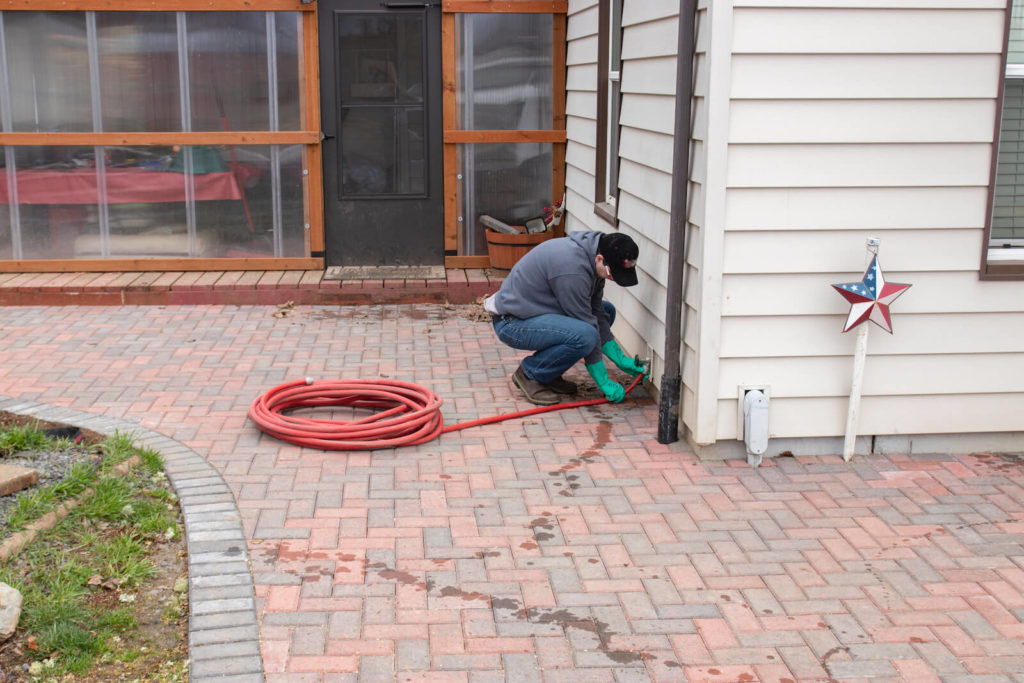
You’ll want to use, approximately, a light solution of a 12:1 ratio of water to acid, or 10 ounces of acid for every gallon of water. NOTE: In a standard two-gallon watering can add 1.8 gallons (236 ounces) of water and 20 ounces of acid. Always err on the lighter side with the acid to prevent damage.
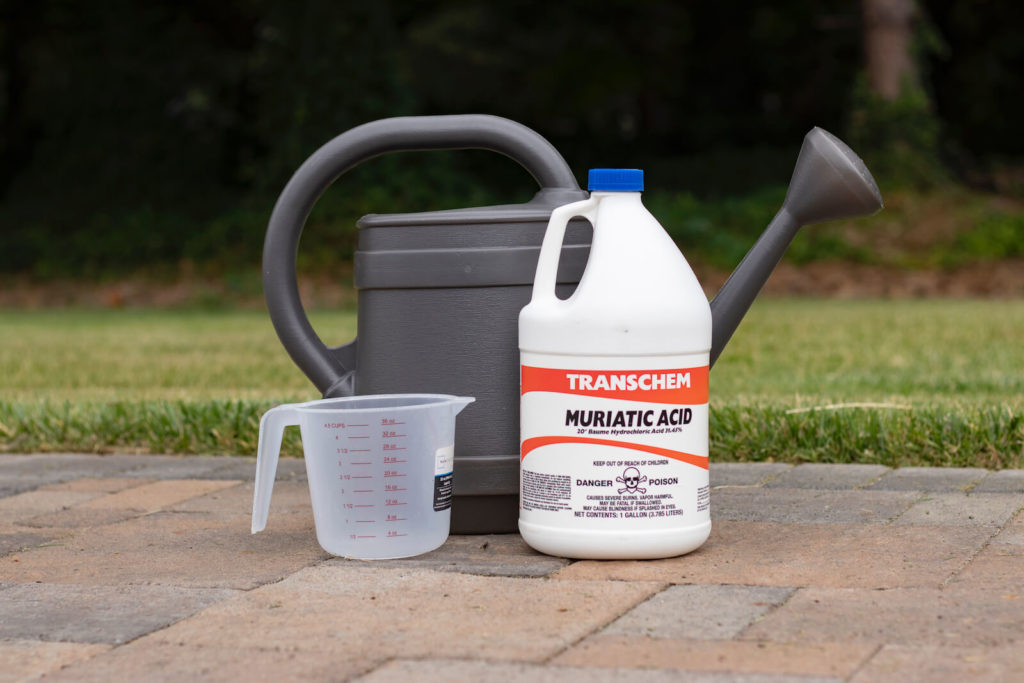
We recommend filling the water can first, then add your acid. We’ve found it helpful to use a cheap, plastic graduated measuring cup to help you measure and add in the Muriatic acid. If you don’t, you’ll risk overfilling the watering can and spilling the mixture.
NOTE: DO NOT USE METAL CONTAINERS WHEN WORKING WITH ACID. The acid will destroy the containers leading to loss of property.
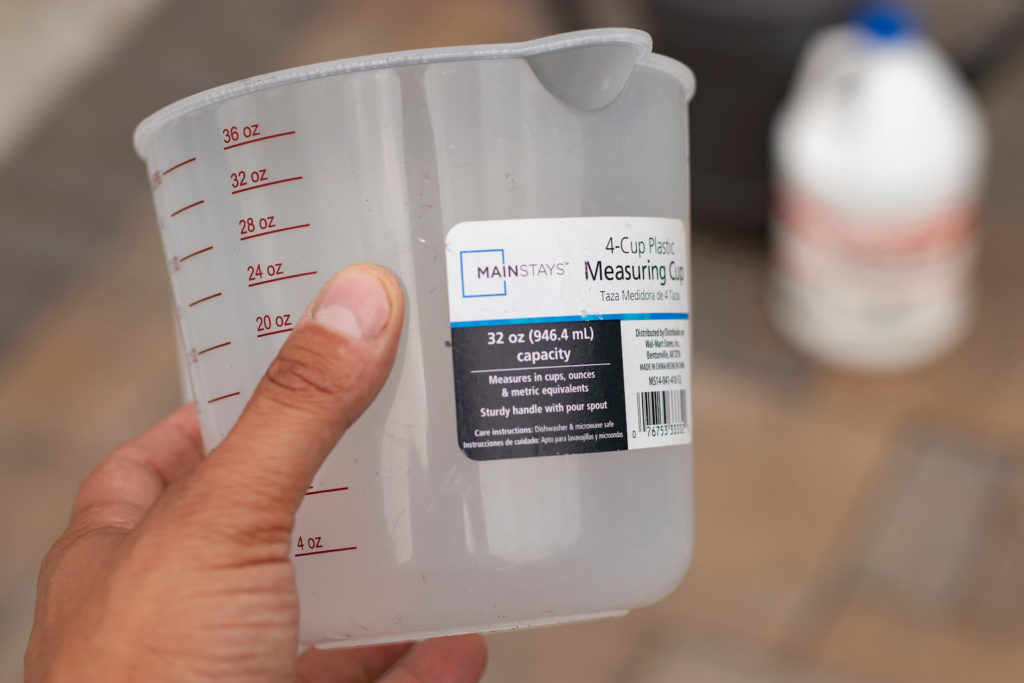
Note: When you’re working with Muriatic Acid, wear protective eyewear, a long-sleeved shirt, pants, boots, and gloves to protect your skin. Even though Muriatic Acid is natural, it’s still acid, and it will cause burns or rashes if it comes in contact with your eyes or skin.
Coat a small surface area of your stones thoroughly using the acid mixture in a watering can, but do so quickly. You want the mixture to do its work but, if you leave it for too long, the acid will score the surface of the pavers.
Break your entire hardscape into small, manageable treatment areas. You want to be able to coat and rinse each area quickly so that the diluted Muriatic Acid doesn’t sit for long. It’s important to remember that while the Muriatic Acid won’t kill plants or grass, try to keep the mixture within the confines of your hardscape.
Pro Tip: Protect surfaces such as metal, concrete or asphalt from the acid to prevent unwanted damage.
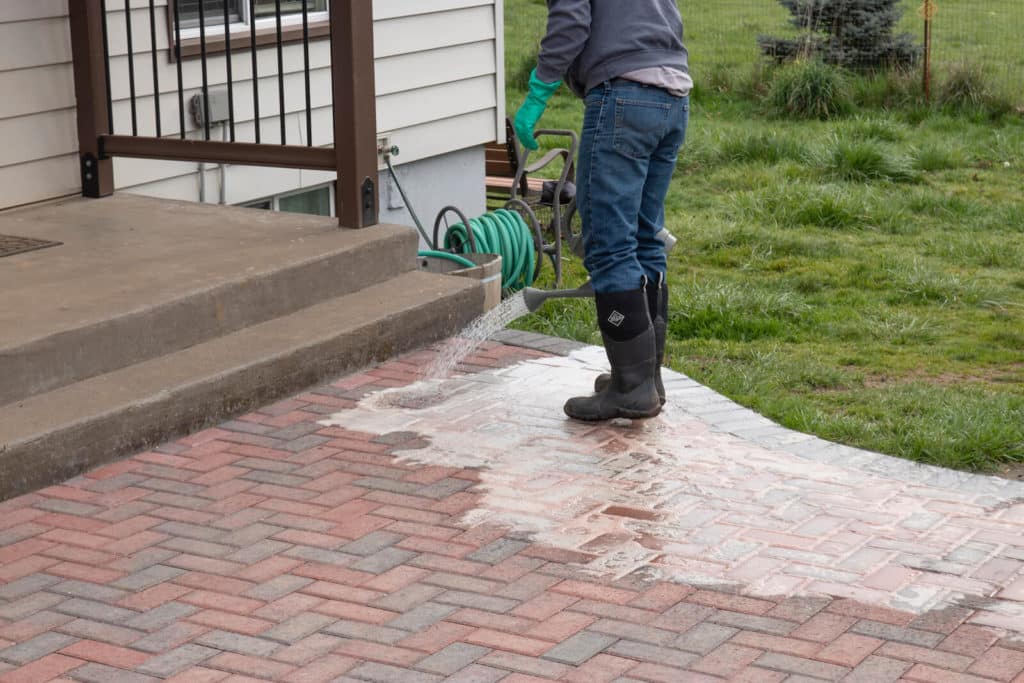
Muriatic Acid breaks down a micron thick layer of efflorescence on the surface of your paving stones, so it’s common to experience some colored standing water or foaming on your pavers. Don’t worry! It’s normal. After rinsing, your hardscape will look as good as new.
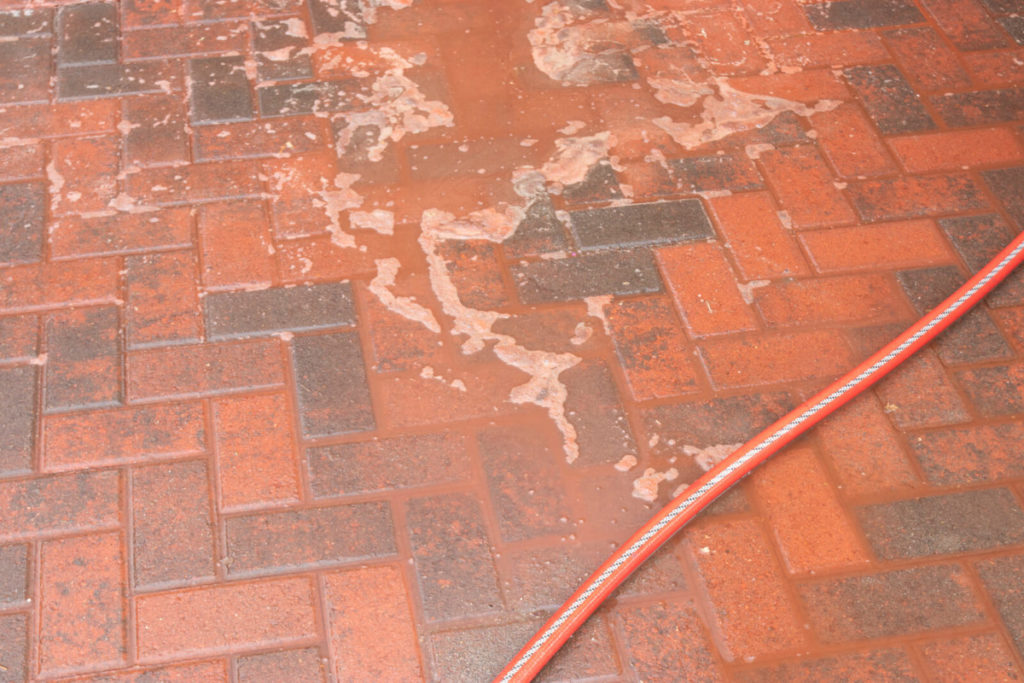
It only takes three minutes for the muriatic acid to break down the salt deposits on your stones so it easily rinses off, returning your stones to their original color and vibrancy.
Smooth surface stones such as our La Lastra™ Paving Stones are especially susceptible to damage because there are no surface irregularities to hide blemishes.
Pro Tip: Don’t forget—you’ll want to rinse your stones as soon as the three minutes are up, so we recommend setting a timer on your phone. If you leave acid longer than three minutes, you risk permanently damaging your hardscape. Three minutes go by fast, so rinse quickly after your timer ends.
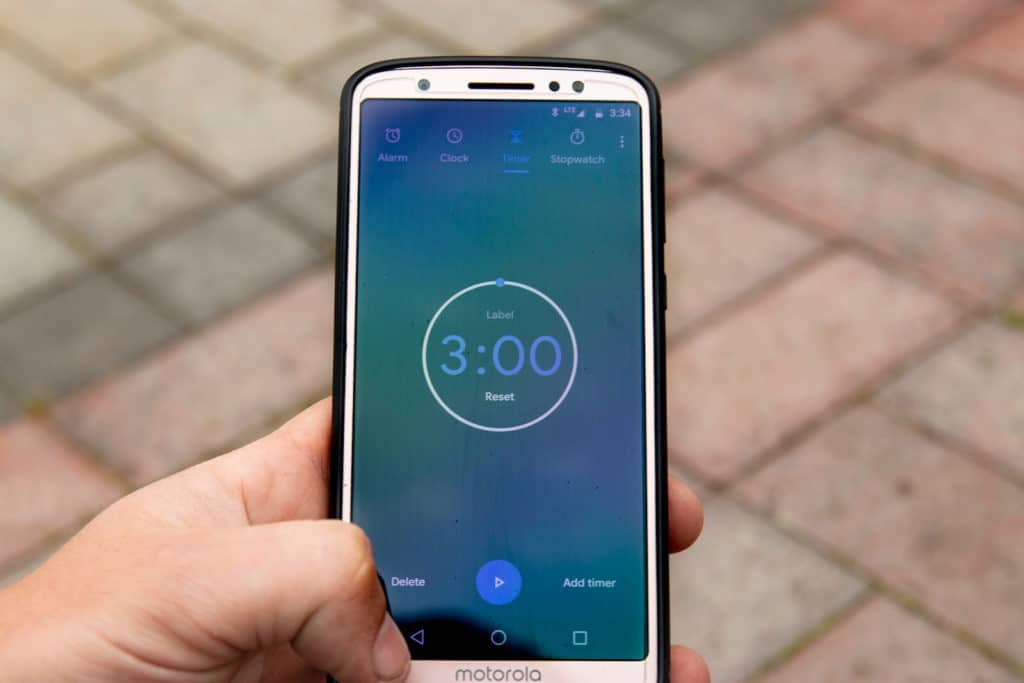
After it’s been three minutes, you’ll want to rinse your stones immediately. Make sure to wash off all your hardscape thoroughly so that there isn’t any remaining acid residue. We recommend spraying into your grass or landscape but away from your house, garden, or any galvanized metal.
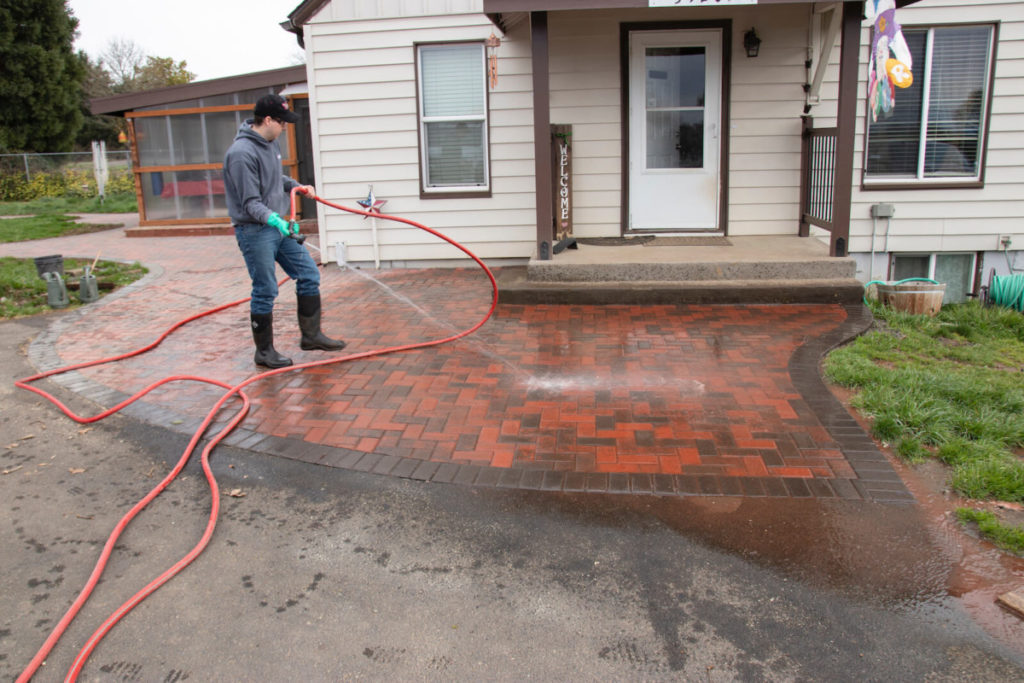
Continue treating your hardscape in small areas. Wash. Rinse. Repeat. If your paving stones had heavy deposits, they may still show efflorescence and you may need to repeat the process on your entire hardscape a few times. Just follow the directions we’ve outlined in this article each time and, after a few washes, your stones will look new again.
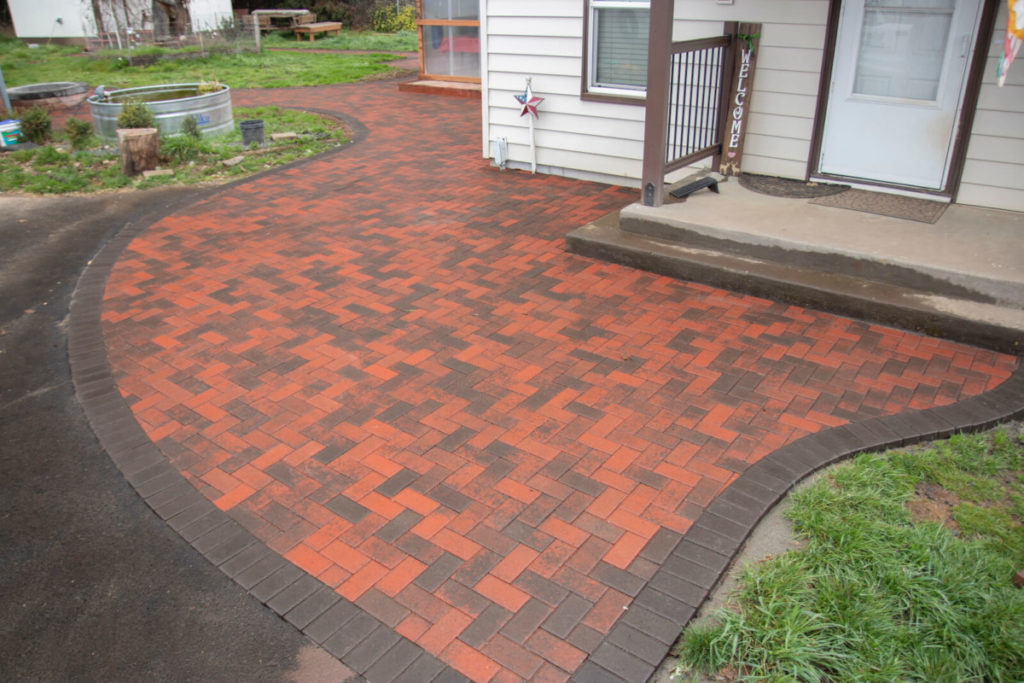
Does your hardscape have moss, bugs, stains, or other types of soiling? Learn how to clean other things from your paving stones with this article.
Yes, efflorescence can appear on almost all paving stones after the concrete cures (and after installation). What makes efflorescence worse is if you install pavers on excessively wet sand in the winter or if you get overspray from lawn sprinklers on your hardscape.
Darker colors such as earth brown, red, and charcoal will show efflorescence much more easily than lighter colors such as pewter or desert tan.
Yes, even though efflorescence sometimes looks alarming, it’s normal—and it’s easy to fix.
We have a couple of tips and tricks for preventing efflorescence, but we can’t guarantee you’ll never experience efflorescence on your stones. If you have paving stones you haven’t laid yet, keep them somewhere cool and dry. Also, when you’re laying the stones, make sure all the materials you’re using (such as sand) are dry.
No. Efflorescence doesn’t cause long-term damage to your stones, but it can make them look dull and white. Treating your paving stones with diluted muriatic acid removes the deposits and helps them look good as new.
Once you’ve thoroughly rinsed the area you treated with diluted Muriatic Acid, it’s safe to play on right away. Muriatic Acid is natural and often used in swimming pools, so we’ve probably all been in contact with it at some time or another. When you pour and rinse correctly, it’s highly diluted. Just don’t eat off of the ground or let your pets lick the paving stones for a while, okay?
Want to learn more about how to keep your paving stones looking great? Join one of our upcoming seminars or give us a call at 503-623-9084.
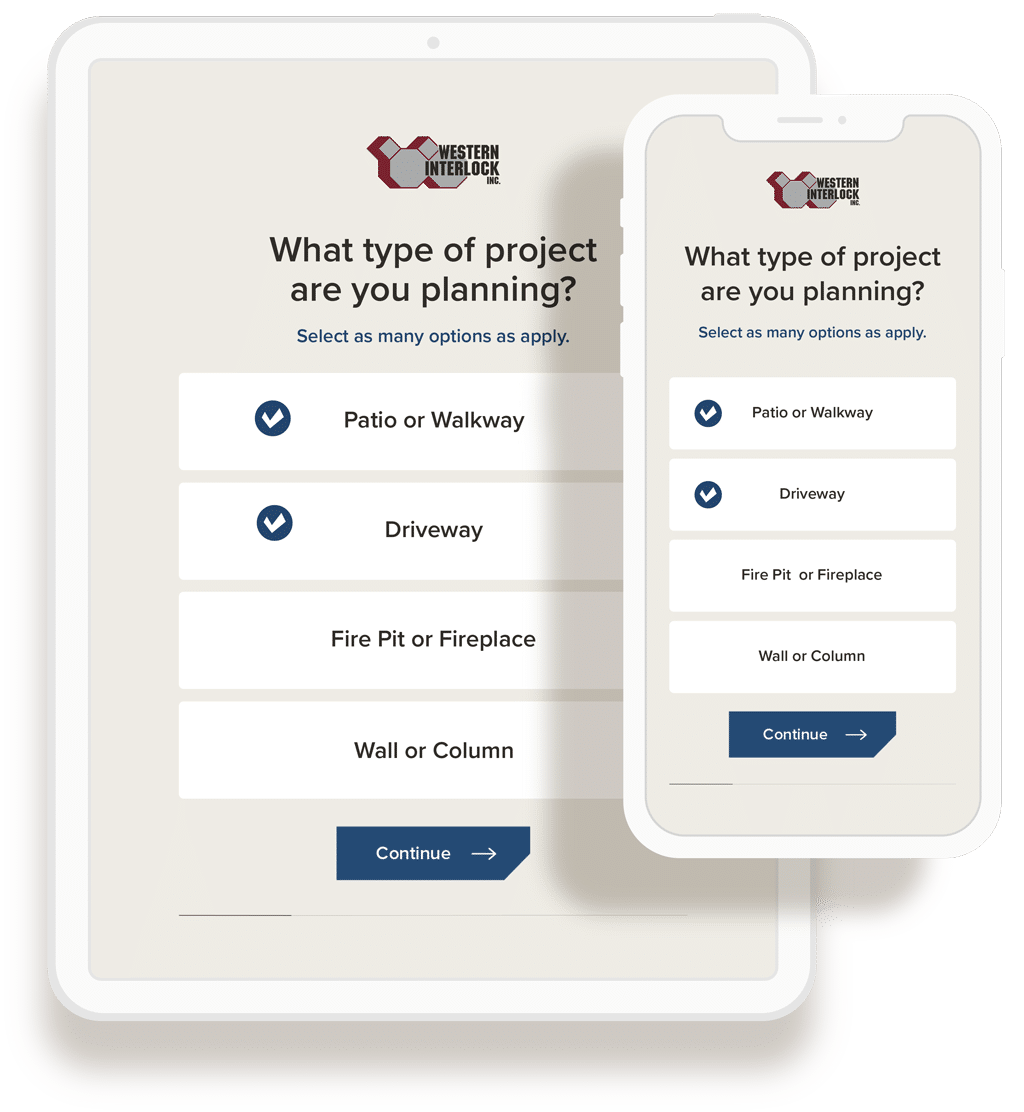
Choosing a paver can sure feel overwhelming. You have to consider size, style, thickness, color, and more. That’s why we made a short and simple quiz that asks a few questions about what you’re looking for and, at the end, provides a recommendation, or two, you can start with.
Learn More